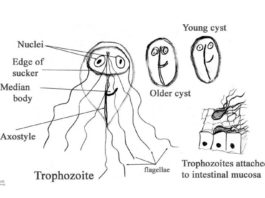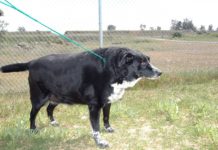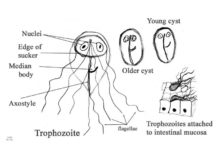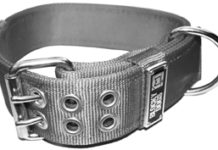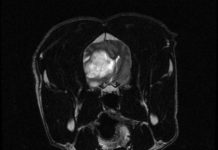Rabies Challenge Fund Studies are in Year Four
Rabies is nearly always fatal to the animals (including humans) who become infected with the disease. That’s why vaccinating our dogs against this deadly virus is required by state law – in order to protect public health, by preventing transmission of this disease from infected wildlife to our pets and to us. Each states requires that dogs and cats be vaccinated for rabies every one, two, or three years.
Home Treatment for Parvo May Prevent “Economic Euthanasia”
When experienced breeder Barbara Sorg noticed that Winks, one of her five 8-week-old puppies, was listless, not eating, and by nightfall was suffering from diarrhea, she hustled him off to her long-time veterinarian the next morning, a Tuesday.??The vet suspected that Winks had not tolerated the dewormer he'd been given Sunday. Although he had never left her property and had no suspected exposure, Sorg asked that he be tested for deadly parvovirus; her veterinarian discounted the possibility.
Symptoms of Addison’s Disease
The signs of this potentially fatal condition mimic those of many other diseases. Treatment can be complex and expensive. Holistic medicine can help. Addison’s disease is the common name for hypoadrenocorticism, or adrenal insufficiency. The adrenal glands do not produce enough, if any, of a number of hormones, including aldosterone, which maintains sodium and potassium levels to regulate blood pressure (among other important functions), and cortisol, which helps the body metabolize glucose and deal effectively with physical and mental stresses of all kinds.
Managing Idiopathic Epilepsy in Dogs
Idiopathic epilepsy affects young dogs between the ages of six months and six years. As the name implies, the cause of idiopathic epilepsy is unknown. It is a diagnosis of exclusion, meaning that other causes of seizures must be ruled out before making this diagnosis.
Canine Pancreatitis
Pancreatitis literally means inflammation of the pancreas, the glandular organ that secretes enzymes needed to digest food. When something causes these enzymes to be activated prematurely, they can actually begin to digest the pancreas itself, resulting in pain and inflammation. Pancreatitis occurs in two different forms, acute and chronic, and both may be either mild or severe. Acute pancreatitis occurs suddenly and is more often severe, while chronic pancreatitis refers to an ongoing inflammation that is usually less severe and may even be subclinical (no recognizable symptoms). Acute pancreatitis can be extremely painful, and can become life-threatening if the inflammation spreads, affecting multiple organs and systems. Symptoms commonly include anorexia (loss of appetite), vomiting, weakness, depression, and abdominal pain. Abdominal pain in a dog may be exhibited as restlessness or not wanting to move; a hunched appearance or a praying position, with the chest down and the rear raised; or vocalization (crying or whimpering). Additional symptoms may include diarrhea, drooling, fever, and collapse.
Why Is My Dog Losing Weight?
Environmental issues can cause a dog to stop eating and be easily fixed. Dental or medical issues can also cause weight loss and need professional assistance to resolve.
Parvo Victim # 2
The name Ray Carlisle is synonymous with Doberman Pinschers. A breeder and exhibitor for 40 years, a show judge for the last 20 years, and a former president of the Doberman Pinscher Club of America, the United Doberman Club, and the American Working Dog Federation, the New York resident travels the world on behalf of his favorite breed. I vaccinated my dogs for many years
Treating Problematic Giardia Infections in Dogs
which resemble cartoonish eyeballs
Dog Seizures: Causes and Treatments
There are few things as frightening as watching your dog have a seizure. Yet dog seizure disorders are surprisingly common. A seizure is defined as uncontrolled electrical activity in the brain. Seizures can run the gamut from very minor, focal seizures (a twitching of the face or a leg) to major convulsions in which a dog loses consciousness, may vocalize loudly, has uncontrolled muscle movements, and loses bowel and/or bladder control.
How to Tell If Your Dog Has Hip Dysplasia
My six-month-old Rottweiler has a goofy, bouncy walk. Does that mean she has hip dysplasia?A lot of puppies especially big, gangly ones have a clumsy, bumbling gait, and this does not mean they have hip dysplasia. If your puppy had a hip dysplasia, you might notice that she limps sometimes, especially after strenuous exercise. You might hear or feel her hips click in and out, or notice that she stands and walks with her hocks or hind feet very close together. You might notice her struggling to push herself up into a standing position when shes lying down, or she might have trouble climbing stairs.
What is Puppy Strangles?
Also known as juvenile cellulitis the puppy strangles is a rare condition whose cause is not known. Most dogs are able to make a complete recovery.





